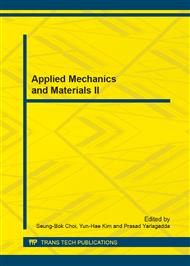p.392
p.396
p.400
p.404
p.412
p.425
p.431
p.435
p.439
A Method for the Assessment of the Inhalation Dose Exposure to Radionuclides in an Indoor Environment
Abstract:
The radionuclides released from NPPs (Nuclear Power Plants) as a result of accidents will significantly affect human health by causing cancer, genetic diseases, or acute radiation sickness. To investigate and evaluate the influence of the airborne hazardous materials on human bodies in an indoor environment in urban areas near NPPs, it is necessary to calculate the inhalation dose. In this study, a method for the assessment of the inhalation dose of indoor radionuclides was proposed. This method consists of the combination of the basic equation of natural ventilation and the empirical equation for calculation of the inhalation dose. The method was applied in a modeled densely urban domain, and CFD simulations were conducted to obtain the wind pressure distribution on the building surfaces. Moreover, the impacts of certain important parameters, including the ventilation coefficient, the age group of humans, the wind velocity, the urban street width, and the building height, were discussed in this paper. The results show that all of these parameters affect the indoor inhalation dose. In most cases, the indoor dose obtained at the same floor was higher with a higher ventilation coefficient, breathing rate, wind velocity, and street width or a lower building height. Furthermore, people living in the middle floors will generally be exposed to a lower inhalation dose than those in other floors especially the top floor.
Info:
Periodical:
Pages:
412-422
Citation:
Online since:
December 2013
Authors:
Keywords:
Price:
Сopyright:
© 2014 Trans Tech Publications Ltd. All Rights Reserved
Share:
Citation:


